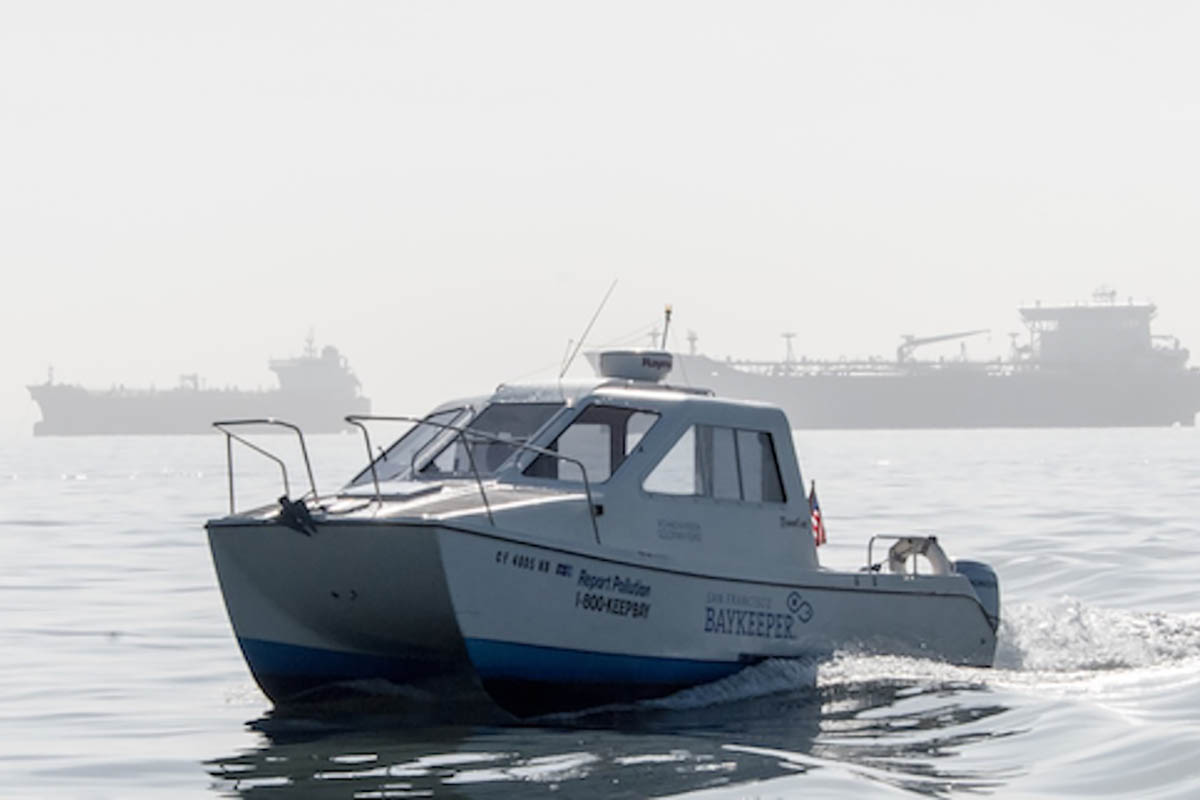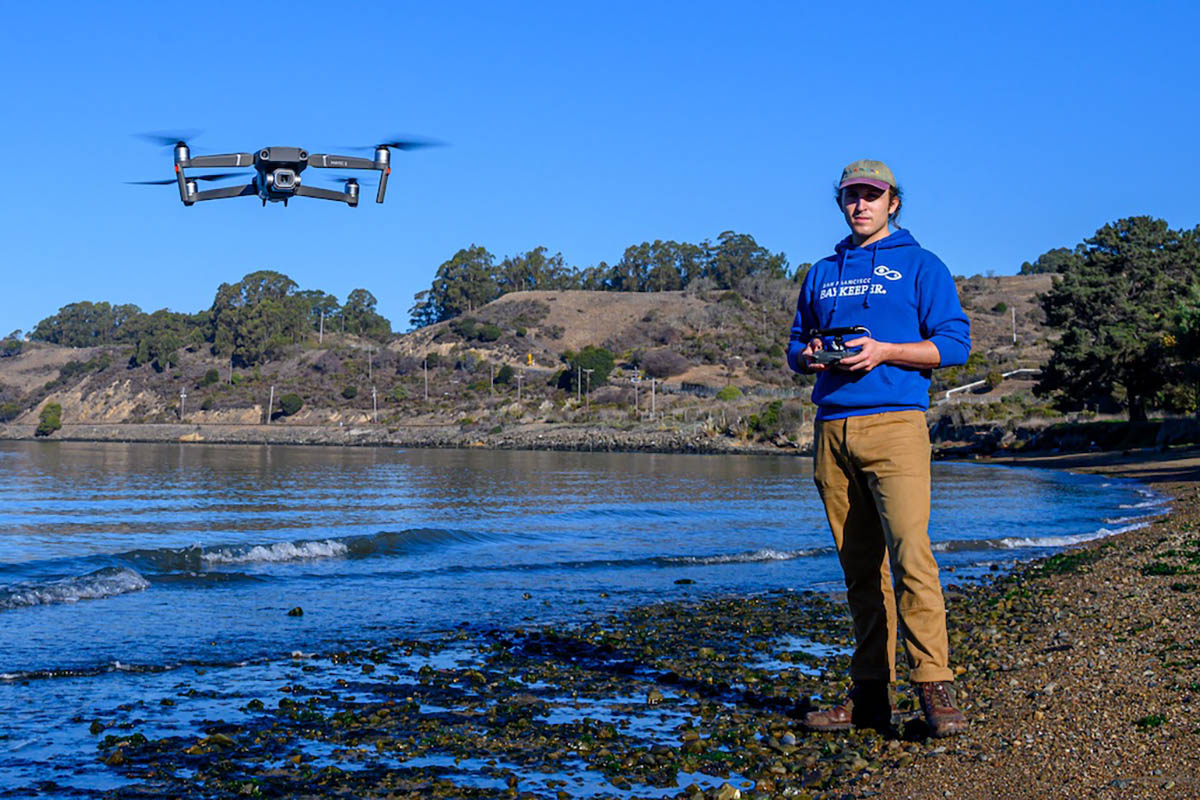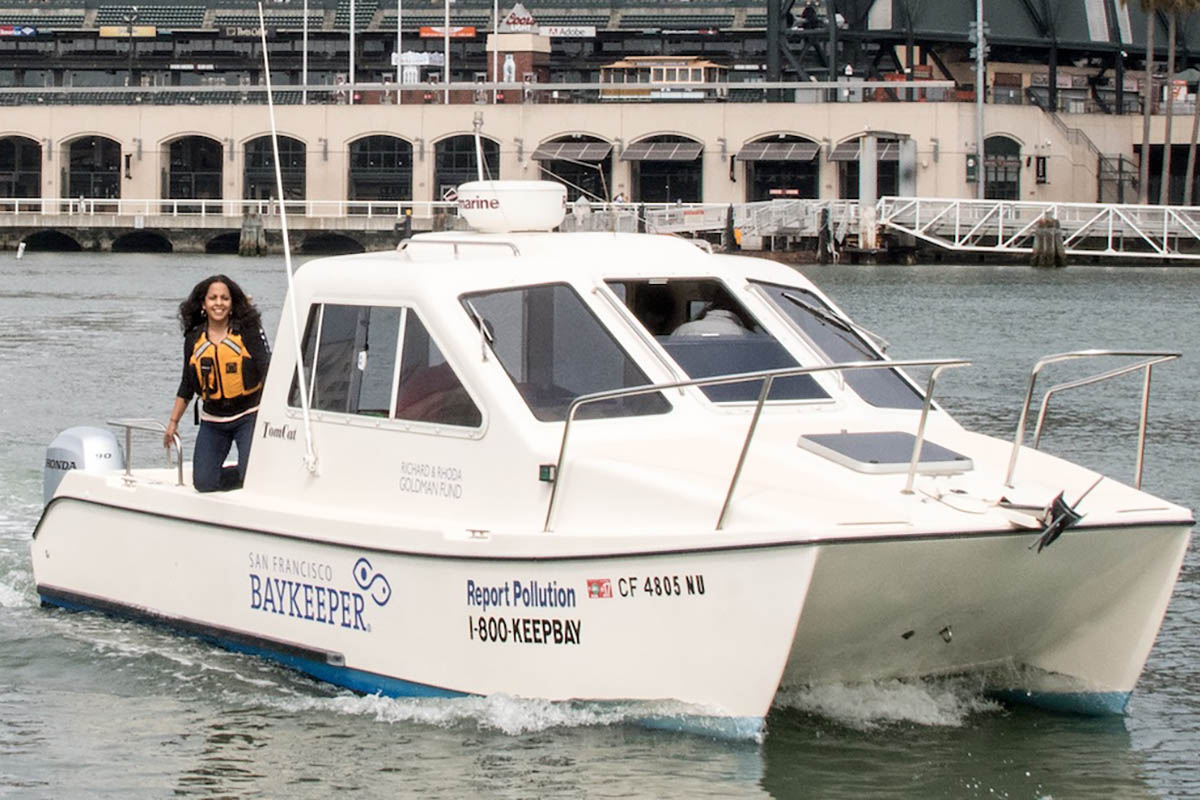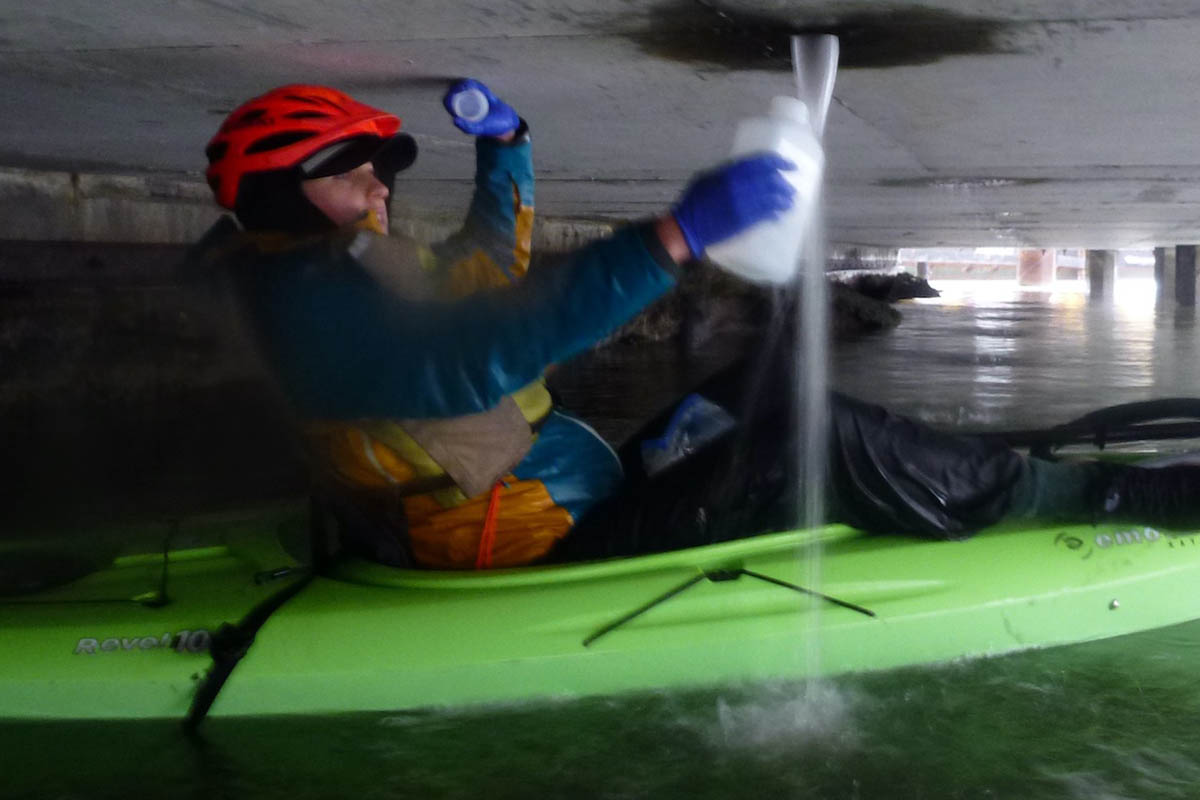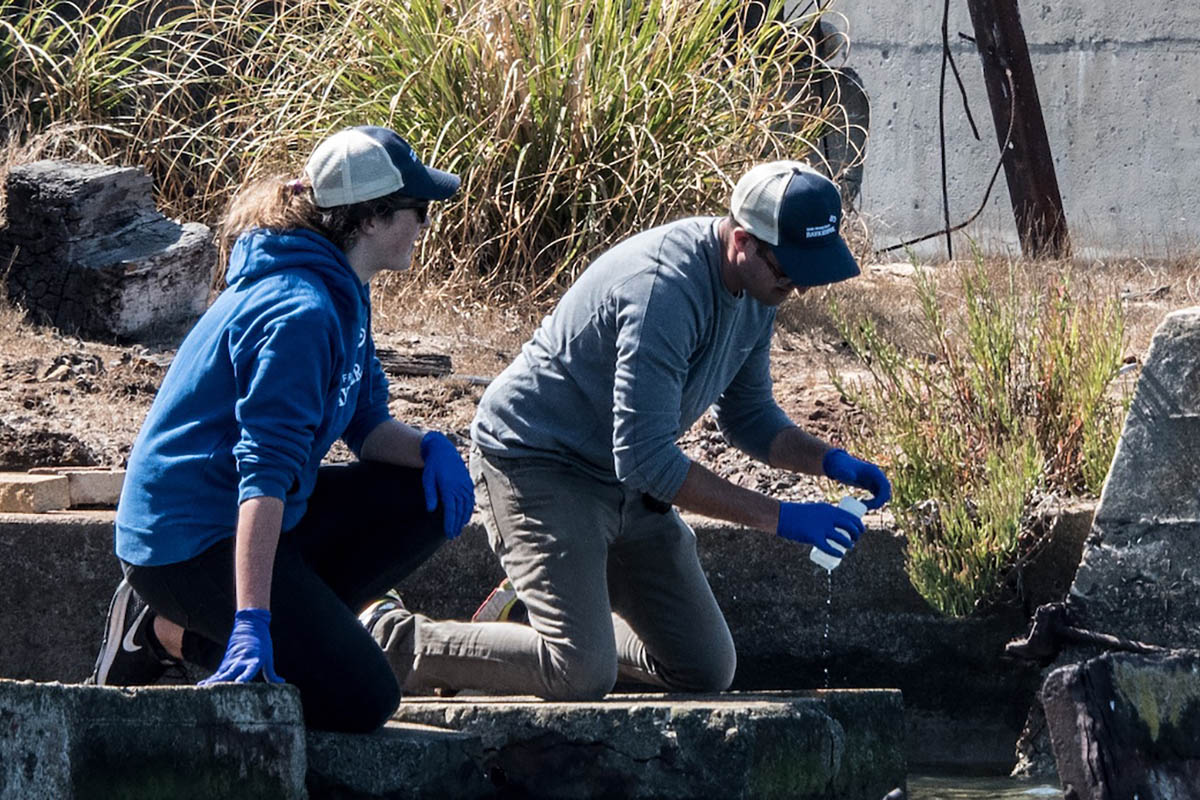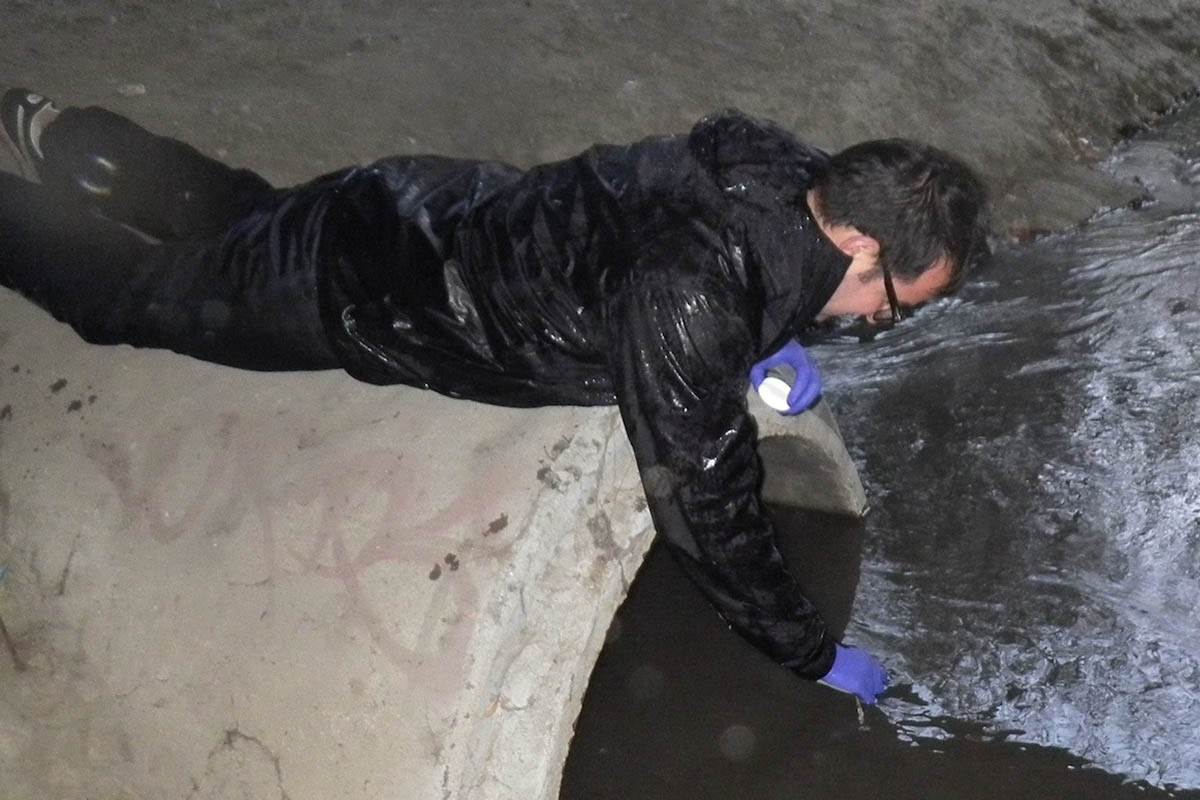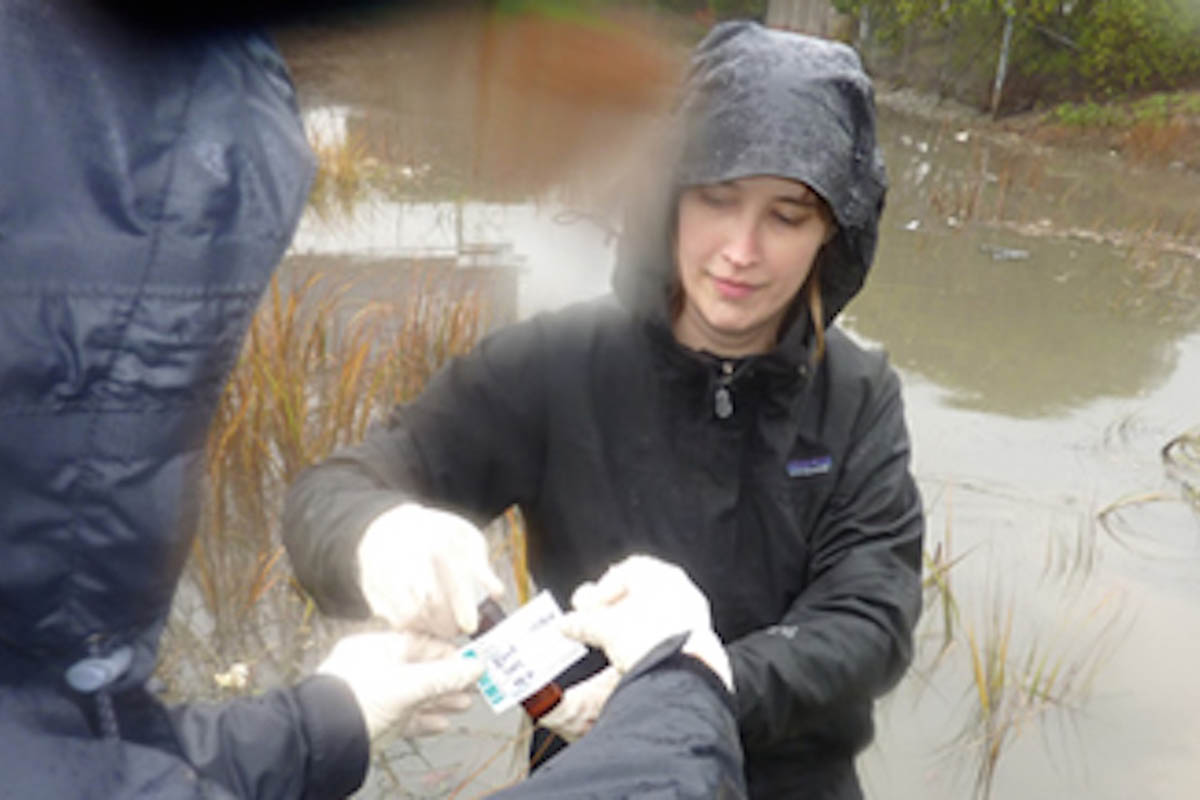
San Francisco Baykeeper
2022 – $15.000 Rewilding Coasts
2019 – $15,000 Coastal Resiliency
2018 – $15,000 Sediment Removal Prevention
San Francisco Baykeeper is the only organization that regularly patrols the Bay for polluters, by both sea and air, and uses environmental laws and the latest science to hold them accountable.
Baykeeper is a fierce champion for the Bay, monitoring the biggest threats to the Bay’s health. This can include municipal sewage outfalls, as well as government agencies and industrial operations that are out of compliance with the anti-pollution laws that keep the Bay and Bay Area communities healthy. In many cases, the polluters can be convinced to fix what isn’t working, but Baykeeper’s team of scientists and attorneys is always ready to fight for the Bay in court.
The organization was founded in 1989, and got off to a start worthy of Barbary Coast legend. A tipster called the Baykeeper hotline—which still takes calls to this day—and alerted Baykeeper about a renegade shipyard that was illegally scooping tons of toxic mud off the Bay floor and dumping it onshore. Patrolling by kayak in the dark of night, Baykeeper caught the culprits red-handed—and in the end the Bay won: The company paid stiff fines, and its officers went to jail.
Baykeeper’s recent wins for the Bay Area include securing a ban on the handling and storage of toxic coal in Richmond, which will keep more than 1 million tons of toxic coal out of the East Bay community every year. Also, Baykeeper took legal action against the US Coast Guard that secured changes in how the Coast Guard cleans its buoys, which will keep toxic heavy metals out of the Bay—and out of all the waters where the Coast Guard operates.
Baykeeper defeated the Trump administration in 2020 when a federal judge ruled in the organization’s favor in Baykeeper vs EPA to protect 1,400 acres of potential wetlands, which would also buffer South Bay communities from the destructive effects of sea level rise.
Baykeeper recognizes climate change as the greatest threat facing the San Francisco Bay today, along with consequent sea level rise. The Bay Area has a dense waterfront population, with people living next door to over 1,000 toxic industrial sites along its shore. This includes Superfund sites in Hunters Point, Alameda, Oakland, Richmond, and San Jose. These toxic sites pose eminent danger to Bay Area residents.
There is a very real possibility that during a storm, the already elevated waters of the Bay would flood toxic sites, flushing pollutants into the surrounding neighborhoods. Bay Area homes, schools, and businesses would be flooded with poison. Critical infrastructure would be under water too, including SFO and Oakland Airport, roads and freeways throughout the Bay Area, wastewater treatment facilities, and more.
The Bay Area needs to institute a region-wide climate adaptation plan with teeth and a timeline—a plan that also identifies and prioritizes contaminated shoreline areas and industrial sites for cleanup.
Baykeeper’s scientists and attorneys are there to help bring that plan together, and to keep an active eye out for polluters. Bayeeper fills a singular role in protecting the San Francisco Bay, the geographic feature that makes the Bay Area unique in the world. The wave that breaks against the shoreline in Tiburon is made of the same water that nourishes the wetlands of Redwood City.
Fighting for Healthy Sediment in San Francisco Bay (2018)
In order to make the Bay more resilient to climate-driven sea level rise, which could devastate San Francisco Bay shorelines and communities, the layers of sand and mud on the Bay’s floor need to stay healthy. When healthy, this sediment replenishes shorelines and wetlands, providing natural protection against rising tides. But private companies, as well as federal and state agencies, have mismanaged and exploited this resource. Baykeeper, with support from the Seed Fund, uses environmental law and science to advocate for safer, state-of-the-art dredging practices, and won a landmark legal victory when the California Court of Appeal ruled that state agencies may not consider sand mining and other mining in waterways to be in the public good.
Preparing San Francisco Bay for Sea Level Rise (2019)
San Francisco Bay is uniquely vulnerable to the ravages of climate change. There are well over 1,000 toxic sites along the Bay, active or no longer in use, that could flood the Bay and adjoining neighborhoods with industrial poisons if the sea level rises—as science predicts it will. With support from the Seed Fund, Baykeeper investigates potentially polluting sites along the Bay that should be prioritized for cleanup, protects wetlands and potential wetlands from development—including prevailing against the Trump administration in Baykeeper vs EPA, which saved South Bay salt ponds from being paved over—and educates decisionmakers about the critical need for regional planning to guard against the effects of climate-driven sea level rise.


